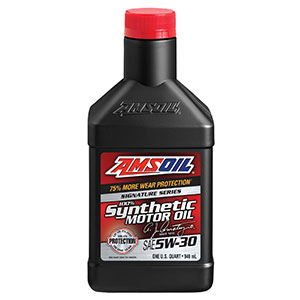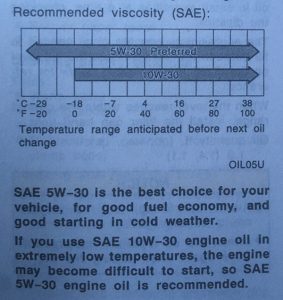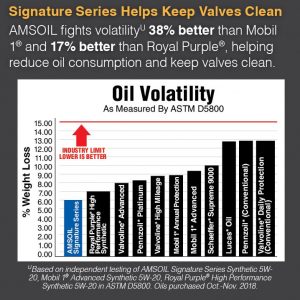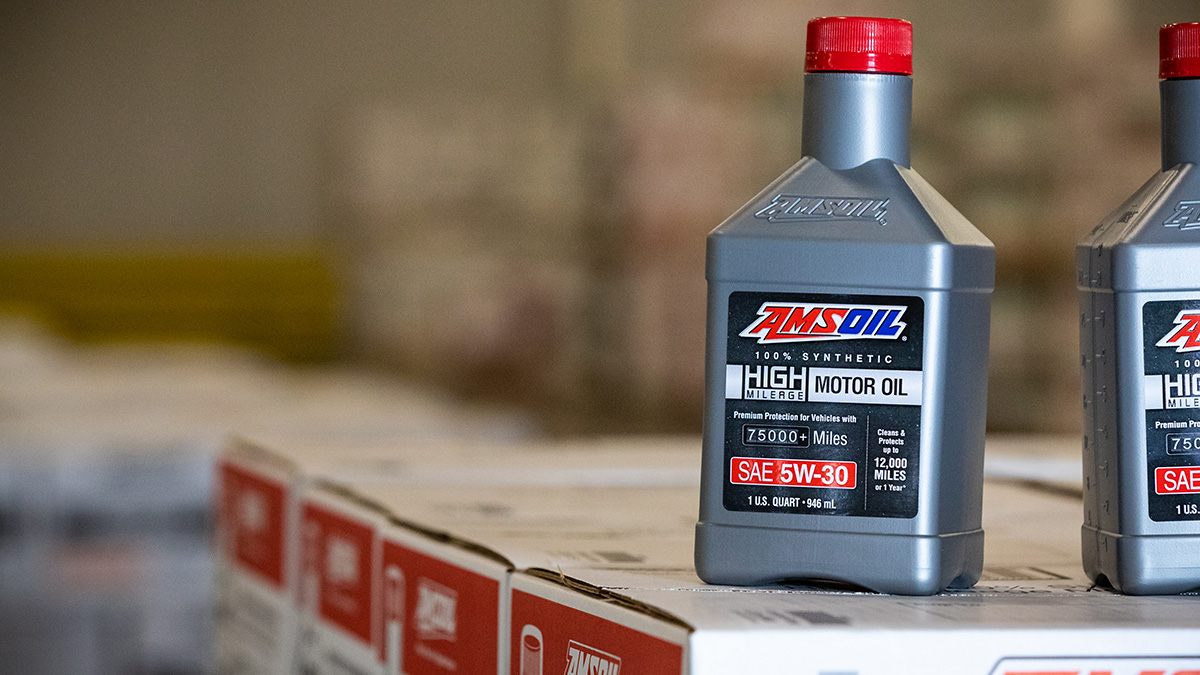The glut of motor oils and different viscosities available can quickly induce analysis paralysis. So, which car oil is right for your vehicle?
The easiest way to find which car oil you need is to use our handy AMSOIL Product Guide. It provides AMSOIL recommendations for the correct viscosity motor oil for your vehicles.
Do some manual labor
To find which car oil is right for your vehicle, you can also consult your vehicle owner’s manual. Inside its intimidating bulk you’ll find the original equipment manufacturer’s (OEM) motor oil recommendation. Look for a couple key points:
- Motor oil viscosity
- Performance or industry specifications the oil should meet
The OEM will recommend a motor oil of a specified viscosity that meets the appropriate performance or industry specifications. For example, the OEM might tell you to use a 5W-30 motor oil that meets the API SP specification, or equivalent.
When choosing an oil for your car, at the very least use an oil that hits those two checkboxes.
Why is viscosity so important?
Viscosity refers to a fluid’s resistance to flow. The higher the viscosity, the more slowly it flows. Honey, for example, has a higher viscosity than water.
Viscosity is the most important property of motor oil. Your engine was built to use a motor oil of a specific viscosity. Today, 5W-30 is the most widely recommended oil viscosity. The “5W” rating refers to the oil’s viscosity when it’s cold [40ºC (104ºF)]. The “30” rating refers to the oil’s viscosity when it’s hot [100ºC (212ºF)].
Oil thickens when it’s cold (its viscosity increases). Alternatively, it thins when it’s hot (its viscosity decreases).
If you use an oil that thickens too much in the cold, the oil won’t circulate throughout the engine as readily, leading to wear. If you use an oil that thins too much when it’s hot, it can fail to keep metal engine components separated during operation, also leading to wear.
You can see the importance of using the correct viscosity of oil in your car. That’s why it’s always printed clearly on the product label.
I should note that some OEMs allow you to use different viscosities of oil depending on ambient conditions. For example, you can use 5W-30 motor oil during the winter and switch to 10W-30 in summer. That’s because, as mentioned, lower-viscosity oils flow better in the cold for easier starts and better startup protection.
In these cases, we recommend using the lowest recommended viscosity during winter.
Motor oil specifications
That brings us to industry and performance specifications. Although confusing, motor oil specifications are there to help you pick the right oil for your car.
The American Petroleum Institute (API) publishes the motor oil specification with which motorists are most familiar. The current version is API SP. Every few years, the API updates its specification to ensure the motor oils available to you are formulated to protect the latest and most demanding engines.
What is a motor oil specification?
It’s a set of minimum performance requirements an oil must demonstrate in a range of industry tests. These tests measure oil consumption, deposit formation, the ability of the oil to flow in sub-zero cold and more.
The API, working with different automakers, determines the minimum performance level the oil must demonstrate for the oil manufacturer to recommend its oils for the latest API specification. The OEM, in turn, often recommends in the owner’s manual using an oil that meets the latest API specification, or equivalent.
This provides reassurance that the oil you’re using meets, at the very least, a minimum level of performance the API deems appropriate to protect your engine.
A 2.0 GPA does not equal 4.0 GPA
Notice how industry specifications establish minimum performance requirements for the oil. That leaves plenty of room for performance differences between oils.
To illustrate, think of the tried-and-true way we’ve secretly judged our contemporaries for decades: the high-school or college grade point average (GPA). While true a 2.0 earns its recipient the right to stride across the stage on graduation day, the valedictorian with the 4.0 is likely entertaining more job offers.
Put it this way: if you’re having heart surgery, do you want the surgeon who squeaked through medical school with a 2.0 or the nerd who graduated 4.0 with honors?
Exactly. You want the best.
To continue the analogy, performance specifications stipulate that all oils must graduate with at least a 2.0. But they don’t distinguish between the slackers and the go-getters.
Which raises the question of which kind of oil to use:
- Synthetic
- Synthetic-blend
- Conventional
Synthetic motor oil
Synthetic motor oil offers the best protection and performance of the three options. It doesn’t contain the impurities inherent to conventional oils, meaning it provides improved resistance to extreme heat, better wear protection and maximum cold-flow properties when the temperature drops. That translates into a cleaner, longer-lasting engine.
Check out the graph below. AMSOIL Signature Series Synthetic Motor Oil demonstrates the lowest volatility, which helps reduce oil consumption and keep your engine clean. The conventional oils, meanwhile, are clearly slacking compared to their go-getter synthetic counterparts. You can also see performance differences between the synthetic oils, meaning they’re not all created equal.
Synthetic-blend motor oil
Synthetic-blend is simply a mixture of synthetic and conventional oils. It’s designed to provide improved protection compared to conventional oil without the higher initial price of synthetic motor oil.
The drawback, however, is that there’s no telling how much “synthetic” is in your synthetic-blend motor oil since there are no industry regulations that require oil companies to publish that information.
Conventional motor oil
Finally, we have conventional oil. Unlike synthetic oils, which are manufactured using a chemical-reaction process, conventional oils are refined from crude oil. The refining process removes some impurities inherent to crude, but it can’t remove them all. As such, conventional oil contains molecules detrimental to lubricating an engine, such as sulfur and waxes.
Conventional oil is more prone to cause harmful deposits when exposed to heat, thicken in the cold, making it more difficult to start your engine, and chemically breakdown sooner, requiring more frequent changes.
When deciding which car oil is right for your vehicle, you can find synthetics, synthetic-blends and conventional oils of the correct viscosity that meet the performance requirements recommended in the owner’s manual. While they all may be safe to use in your car, they don’t provide nearly the same protection or performance.
If you’re driving a beater that heralds its arrival with a plume of blue smoke and a cacophony of slapping pistons and knocking rods, use the cheapest oil that meets the OEM requirements.
But if you want the best for your engine, use synthetic motor oil.
Updated. Originally published Feb. 25, 2019.









Comments
Share: